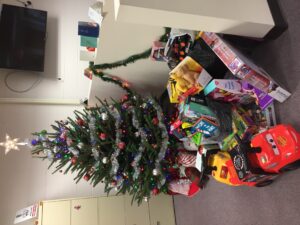Identifying a Fresh Christmas Tree for Fire Safety
go.ncsu.edu/readext?756516
en Español / em Português
El inglés es el idioma de control de esta página. En la medida en que haya algún conflicto entre la traducción al inglés y la traducción, el inglés prevalece.
Al hacer clic en el enlace de traducción se activa un servicio de traducción gratuito para convertir la página al español. Al igual que con cualquier traducción por Internet, la conversión no es sensible al contexto y puede que no traduzca el texto en su significado original. NC State Extension no garantiza la exactitud del texto traducido. Por favor, tenga en cuenta que algunas aplicaciones y/o servicios pueden no funcionar como se espera cuando se traducen.
Português
Inglês é o idioma de controle desta página. Na medida que haja algum conflito entre o texto original em Inglês e a tradução, o Inglês prevalece.
Ao clicar no link de tradução, um serviço gratuito de tradução será ativado para converter a página para o Português. Como em qualquer tradução pela internet, a conversão não é sensivel ao contexto e pode não ocorrer a tradução para o significado orginal. O serviço de Extensão da Carolina do Norte (NC State Extension) não garante a exatidão do texto traduzido. Por favor, observe que algumas funções ou serviços podem não funcionar como esperado após a tradução.
English
English is the controlling language of this page. To the extent there is any conflict between the English text and the translation, English controls.
Clicking on the translation link activates a free translation service to convert the page to Spanish. As with any Internet translation, the conversion is not context-sensitive and may not translate the text to its original meaning. NC State Extension does not guarantee the accuracy of the translated text. Please note that some applications and/or services may not function as expected when translated.
Collapse ▲ There is no quick answer to the question “how fresh is this tree?” On the retail lot, it is a matter of observing several subjective factors related to tree care. Some Christmas tree growers use the natural shade of white pines or other trees to create a cool storage area.
There is no quick answer to the question “how fresh is this tree?” On the retail lot, it is a matter of observing several subjective factors related to tree care. Some Christmas tree growers use the natural shade of white pines or other trees to create a cool storage area.
- Are the trees displayed in water?
- Is the ground or mulch wet from periodic irrigation?
- Are the trees displayed in a shady area?
- Does the store receive multiple tree shipments? The more deliveries the better because it reflects a later cut date or at least longer (cooler) farm storage.
- When you examine an individual tree you can also look for several characteristics.
- Is the tree heavy? If it is, it is probably heavy with water. If it is light, it is dry.
- Is the foliage cool to the touch? Again, a cool tree is a moist tree. A dried out tree will feel warmer.
- Are the needles soft to the touch? A dry tree will have stiff, sharp needles. The exception to this rule are the spruces which naturally have stiff, sharp needles.
- Are the needles a rich, dark-green color? Dry trees are often bleached-out to a lighter olive-green or grey-green.
- Do the needles stay on the tree? This can be misleading as older needles back inside the canopy of the tree closer to the trunk will shed on even a moist tree. However, needle shed on a cut tree should not be extensive and needle loss on the most current growth on the outside of the tree indicates a problem.
- Are the needles fresh? Very fresh needles are will snap when bent like a fresh green bean. Somewhat dry needles have lost their plumpness and will bend rather than break (like a rubbery, stale green bean). These needles will still take up water if provided. These stressed needles are also most likely to naturally drop if the tree is not fully dormant. The driest needles are so brittle and stiff that they easily break when branches are brushed and leave a broken stub on the branch they came from.
- Is the cut stump sticky with sap? Examine the bottom of the tree where it was cut. If the stump is sticky, that’s a good sign that the tree is still fresh.
Originally written by Jeff Owen and Jill Sidebottom
Read more: Freshness Fire Safety and Your Tree




